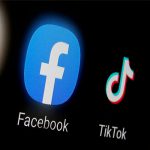8 Technologies and How You Should Be Marketing With Them & Digital Marketing on TikTok in 2020.
Influencer marketing & Advertising on TikTok & Instagram, Pinterest & Snapchat …
Marketing is the primary challenge of every business.
A brilliant idea will fail if it is not marketed correctly. Online marketing tactics such as search engine optimization, social media marketing and online sales funnels have created low-cost alternatives to effectively market a brand using advantages in technology.
As customers increasingly adopt technology in every aspect of their lives, the goal for marketers should be to find the best channels to connect with those people. Here’s the trick: The ones that adapt faster win. As more and more marketers realize these advantages, the media channels become crowded and customers become blind to marketing. That’s why marketing is a constant game of change, and those who stay ahead of the curve win.
With that said, here are some innovative ways to market in 2020. To start, let’s address the most important preliminary issue: What do you sell?
One size does not fit all
The tactics discussed here work differently for each industry. Fashion, for instance, benefits a lot from AR/VR, whereas most B2B businesses may benefit more from LinkedIn live videos. TikTok works great for entertainment and B2C. SEO serves every business.
The techniques and methods discussed here, although exciting and inspiring, may not work for your specific niche. So, while yoi’re welcome to read and use all of it, pay attention to your business model to yield the best results.
How To Get Leads On LinkedIn ? Generate B2B leads
Voice search
In 2017, a Google report found 20 percent of mobile queries are voice searches. That number is predicted to reach 50 percent in 2020. According to a survey by NPR’s Smart Audio Report in late 2019, 157 million households in the U.S. use smart speakers, a 135 percent growth in two years. On average, people have 2.6 devices in their homes, which means they want to increase the amount of audio content they consume.
However, optimizing for typed text is different from optimizing for voice. “People speak to voice assistants like they’re speaking to a human,” said Andrea Knezovic, brand manager and content writer at mobile marketing agency Udonis. “That means they’re more likely to use a conversational tone, long-tail keywords and questions.”
In late 2019, Google updated its search engine algorithm to adopt BERT, a natural language processing engine. Google’s aim is to move from “keyword-ese” search to one that feels natural. Instead of “best places to shop,” people now ask “Where can I buy the best dress in L.A.?”
Customers tend to include location terms in their voice queries, so emphasizing your location-based services or including location keywords makes you more visible. Optimizing for voice search is trending. To use this trend to your advantage, you must answer specific questions and put more effort into the quality of the content.
A research report by SeoClarity states that almost 20 percent of all voice searches include a set of 25 trigger words, with “how” and “what” on the top of the list, followed by “best,” “where” and “top.”
Google is offering $340 million in free ads for coronavirus help package
Featured snippets
In recent years, Google has introduced a separate section on top of its search results where it shows the information it deems most relevant to the query. This is called the “featured snippet,” and digital assistants love to read them out when people ask them questions.
“The featured snippet pulls the core data from a top-ranking post and displays it in a separate box,” said Dale Johnson, co-founder and content strategist at Nomad Paradise. “To optimize, use H-tags throughout your web page so that Google knows what core data to pull (e.g. product headings), and use a relevant, engaging featured image — make it original, if you can.”
Featured snippets also have their downsides. Because Google is showing the answer to many questions right at the top of its results, “in some markets, half the searches don’t result in a click by the searcher. This means people search, find the answer and leave Google without ever clicking through to one of the results,” says Reuben Yonatan, a marketing and sales expert. “In this new world, it’s not enough to rank for keywords anymore. What good does it do if you rank number one for a search term, but no one clicks through to your website?”
For this reason, marketers should also focus on keywords for more in-depth content than what can be shown in featured snippets.
YouTube SEO
After featured snippets, YouTube videos rank on top. “More and more, Google is favoring YouTube videos in search results alongside web pages,” Johnson of Nomad Paradise says. “If you don’t currently market on YouTube, it’s worth producing video purely for this reason. Your core focus doesn’t need to be growth on the YouTube platform, because these videos are purely for embedment in web pages and search engine ranking.”
Just like you find keywords with low competition to rank for, you can find keywords relevant to your business with few or no YouTube videos and make videos for them. Your videos also need to be optimized. “The first part is the optimization of the title and the video descriptions,” says Annie Shulyarenko, a senior marketing manager at Hoppier. “The second and equally important part is to use closed captions. Not only will they make it easier for a portion of the population to consume your content, but they will also make your videos rich in keywords. The more keywords, the easier it will be to rank for your desired terms in Google.”
In 2020, video is a crucial medium. Faster network communications make video consumption easier, and platforms are increasingly favoring video content — which leads us to our next section.
Digital Marketing on TikTok
TikTok is the new trending social networking platform.
Digital Marketing on TikTok : The current audience are mostly young people (under 25) who do not have much purchasing power. But TikTok does have its strengths. “What’s important for businesses to remember is that TikTok is very light and fun,” says Knezovic. “It is an opportunity to show a more creative and humorous side of your brand. Moreover, it is a very intimate platform, which makes it perfect for establishing a real connection with an audience.”
TikTok works best for B2Cs, particularly food, fashion and clothing businesses. Using challenges, influencer marketing and advertising yields the best results on TikTok.
TikTok challenges
“One of the ways I promoted my brand on TikTok is by promoting #HashtagChallenge,” says Rameez Ghayas Usmani of PureVPN. “In this type of campaign, the brand challenges users to create and upload TikTok videos inspired by their original video using the #HashtagChallenge and tagging three of their friends to attempt the challenge. The person with the most hearts on the video wins a free product from the brand. This helped the percentage of my brand searches increase by 44 percent and had almost 25 percent engagement.”
also read :
- Instagram Advertising : Complete Guide + free instagram sponsored ads
- How to Block Ads on Instagram ? Remove Instagram Ads
- Native Ads : What are different types of Native Advertising ?
- How can you remain productive while working From Home ?
Influencer marketing
Usmani also shared his experience with influencer marketing. “I chose an influencer from the country I wanted to target for my and worked with that influencer to feature my product. The influencer recommended the viewers try the product and leave a comment once they bought it, and one purchaser would have the chance to meet that influencer in person. This alone helped my brand searches from that specific country increase by 50 percent, and I got 2,000 orders for my product.”
Advertising
Advertising on TikTok can also be a great opportunity. Knezovic spent $40,000 on TikTok ads for the past six months and got 200 million impressions, over two million clicks and more than 400,000 conversions in results. TikTok’s audience is young, but “businesses that establish a connection with that audience now might reap the benefits once that generation grows older,” she says. “Brand recognition should be one of the main goals of using TikTok.”
In 2020, there are two Instagram features you should focus on: story ads and direct messages. “A DM-based campaign I recently ran yielded replies of 42 percent,” Johnson says. “There’s an intimacy about direct messaging that ads and feeds cannot compare with. Systematically reach out to your following and treat it as you would an email outreach campaign. DMs eventually will become monetized and have ads, but for now few companies are using it as a marketing strategy.”
Another currently overlooked Instagram marketing tactic is using story ads. They were added in March 2017 but are still “significantly underpriced, averaging around six cents per click compared to Facebook’s 30 to 60 cents per click,” says Jamie Halper, founder and managing director of PrettySocial PR. “And 60 percent of all Instagram story viewers watch with sound, so utilizing a short 15-second video for an Instagram story campaign is key.”
Again, your business type determines how you can best utilize Instagram. “We’ve found that products that lend themselves to movement and tutorials, or that capture on video easily, tend to garner higher CTR’s than products designed to be stationary, which tend to have lower conversion rates,” Halper says. “Beauty and wellness brands, especially those that require some sort of personal storytelling aspect or short demo, are ideal for Instagram story ads.”
In 2018, Instagram launched IGTV, which allows people to post videos longer than 60 seconds. It instantly established itself as a competitor to YouTube, but there’s yet another video format that most of the major platforms are competing on.
Live video
Live streaming’s benefits are twofold. The number of digital natives who prefer the video format is growing, and brands are being challenged by cord-cutting and ad-blocking. Live-streaming not only appeals to this audience but also overcomes these challenges. Platforms like YouTube, Facebook, Twitter, Twitch, LinkedIn and Instagram are all prioritizing live video.
Many of the stats around live-steaming show that it keeps users more engaged. “Being able to respond to comments and questions live makes your users feel like they’re having a direct conversation with you,” says Barbara Hernandez-Taylor, head of product marketing for Azuga. “This will ultimately build trust between you and your followers, which leads to consumer loyalty.”
AR and VR
Two more under-the-radar technologies brands should know about are augmented reality and virtual reality. Right now, Snapchat and Instagram are the most prominent domains for this type of content. “Most people are unaware, but augmented reality is used by millions daily,” says Matthew Fischman, founder of marketing agency Har Har Creative. “The difficulty for brands will be to convince their customers to download yet another app. This is why building apps on platforms such as Instagram and Snapchat ― where their customers already are — is advantageous.”
Retail and beauty brands are already using VR to show customers how a product will look before buying it, and home decor companies are using the technology to allow customers to see how furniture would look in their homes. Statistics show that people who have tried a product using VR are not only more likely to purchase but also less likely to return it.
A report from Statista included statistics that indicate Pinterest is one of the most underutilized marketing platforms. Only 28 percent of global marketers use it, but people tend to rate Pinterest ads 1.4 times more relevant and useful than those on other platforms.
Platforms that are still expanding usually offer lower fees to gain more advertisers. Utilizing them at this stage can be a steal, and Pinterest is currently in that position. If your brand heavily relies on images (anything from food, to clothing, to travel, to real estate), Pinterest should be on your marketing agenda.
Key takeaways
It seems that video is one of the major mediums marketers must utilize in 2020, as many of the techniques (including SEO) involve video marketing. This makes sense and will likely grow as younger audiences favor video over text. If you adopt a video marketing strategy for 2020, you will have a lead and can connect with your audience on many platforms.
Other than video, have an eye out for new technologies and trends. Checking which apps are trending on the app stores on a weekly basis is a good start. New technologies are constantly being developed to make life and work more convenient for people. Adapting to change and staying ahead of the curve is key for effective marketing.











